[ad_1]
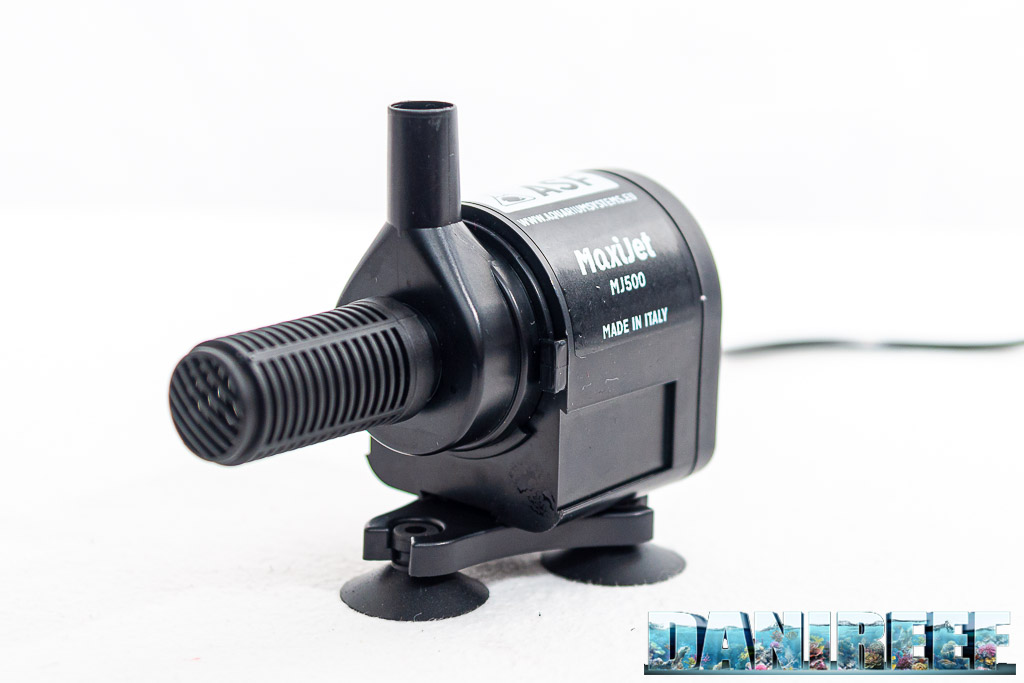
The MaxiJet MJ500 is the first ASF Aquarium Systems pump we have tried, and we were really enthusiastic about it. Technical and measured data are absolutely in line.
I think anyone who is a long-time aquarist has had a MaxiJet pump at some point, so for us it was finally time to thoroughly test one to see if the characteristics noted were in line with those claimed by ASF Aquarium Systems. A perfect pump for any type of filter, as a loading pump for not-too-big double-pump skimmers, and especially for all those small jobs that need to be done in the aquarium. For transferring liquids between two containers, for dissolving salt, for moving sediment from rocks, in short, one of those pumps that should not be missing from an aquarist’s kit.
The pump is a non-adjustable AC centrifugal pump. We measured, as usual, head, flow rate, and power consumption.
For head we used the usual perfect static method, which we will go on to illustrate in great detail in our video. For flow rate we used the DigiFlow 6710M flow meter, and for consumption we used the RCE PM600.
| European Version 230 V – 50 Hz | |
| Flow rate: | 550 l/h |
| Consumption: | 5.3 watt |
| Pump head: | 110 cm |
| Width: | 5 cm |
| Depth: | 5.9 cm |
| Height: | 5 cm (only body) |
| Price: | 32,50 EUR ($36 USD) |
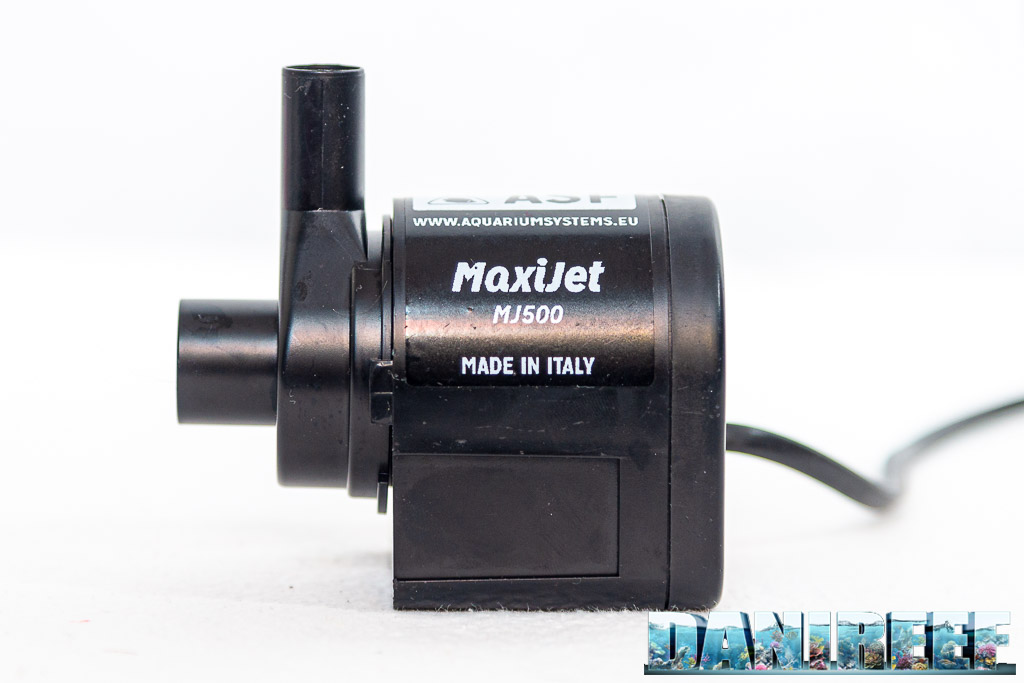
The MaxiJet MJ500 is said to have an energy efficiency of 103.8 liters per watt consumed and an economic efficiency of 16.9 liters per second per euro and thus a benchmark of 302.5 l*m/h.
Take a look at our video, is in Italian, but you can add English subtitles.
For a relatively low cost, you can buy a very solid pump that can be used anywhere. Very good technical efficiency and a somewhat less economic efficiency, but mainly because we are talking about a small pump, where construction costs prevail. Let’s see what our lab tells us.
The construction
The pump is simple. Quite square-shaped. The shape is very recognizable because it has been the same for many years, although compared to the previous series it has been greatly reduced in size, losing at least 30 percent. It comes in the classic dark gray livery.
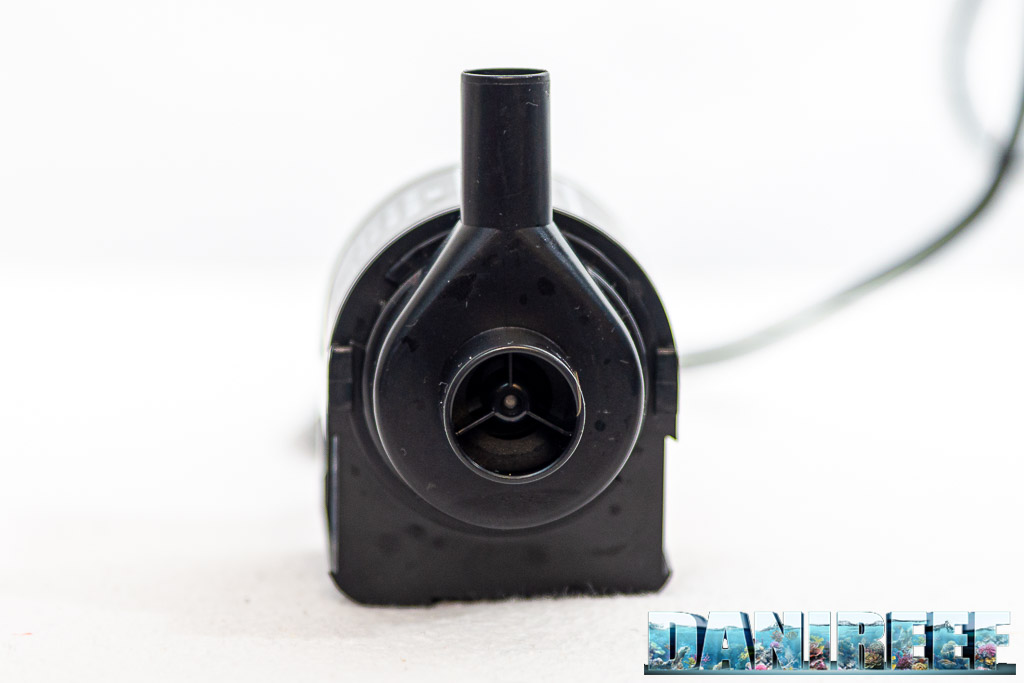
Inside the package are the pump and the iconic cylindrical grid to be inserted in front of the intake to avoid collecting algae and dirt. Also included are 3 small fans and a stand to insert below the pump to avoid unwanted vibrations.
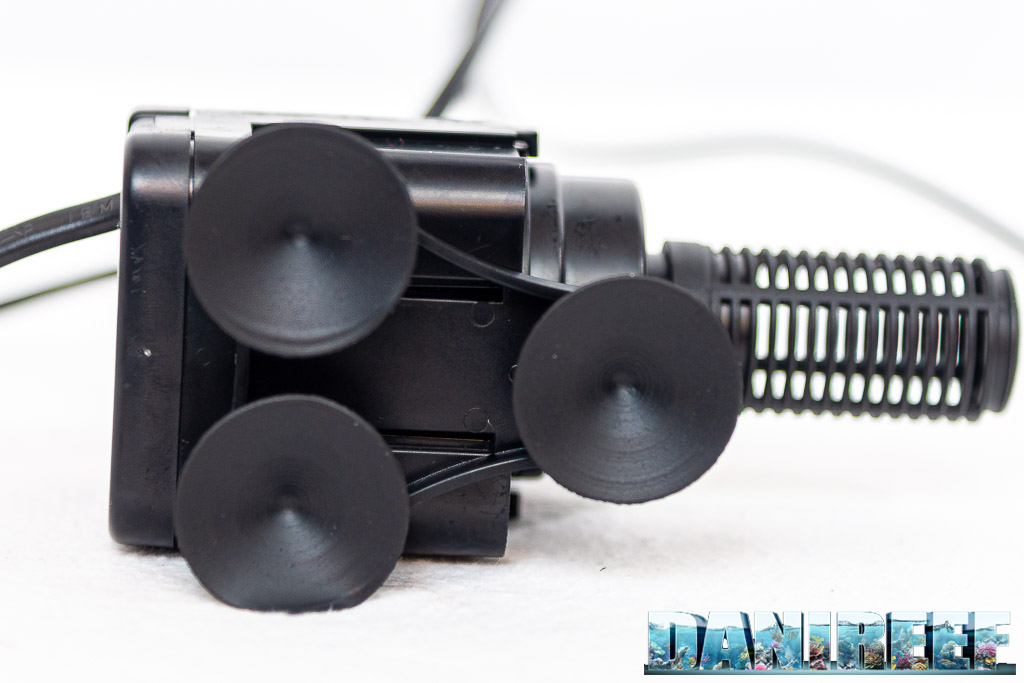
The impeller is the classic one with 3 straight blades and a metal shaft. The dimensions, given the very low reference value, and especially the footprint of the pump itself, are extremely small.
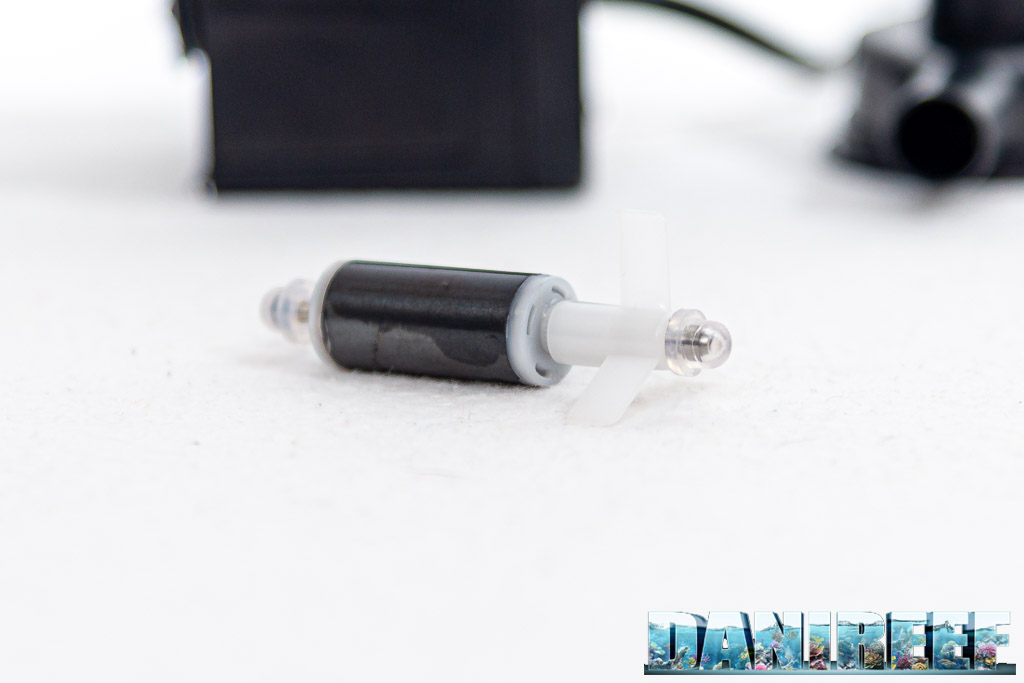
Pump head
The first test we did was to measure the head. As you know, head is the ability of the pump to elevate water above a certain height. To do this we measured the water level reached inside a rubber hose. In our video we are going to explain in great detail the whole procedure, which, if you like, you can reproduce at home.
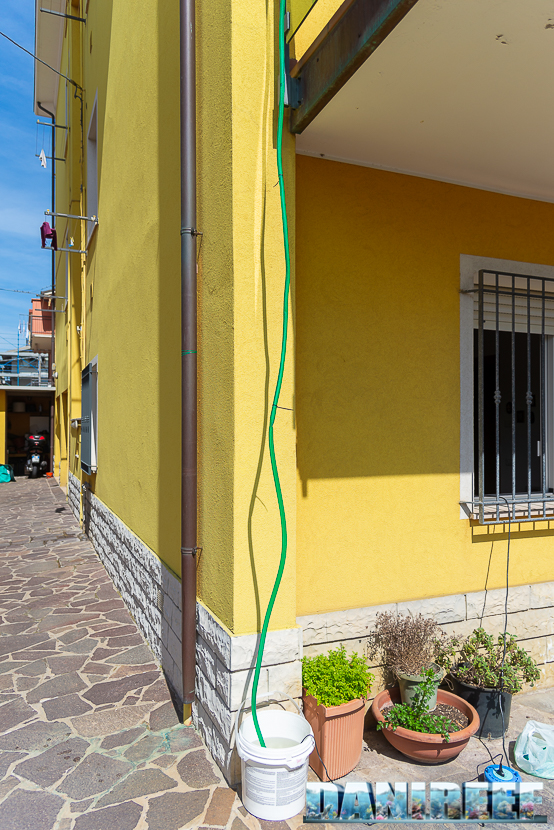
As you can see in the archival photograph above, we clamp the pipe to the terrace. Then we turn on the pump we’re testing, and after waiting 10 minutes for it to stabilize, we measure its head.
We measured a maximum head of 109 cm against the declared 110 cm.
The deviation between declared and measured head is practically insignificant. Less than 1%, which could safely fall within a small instrumental error. Perfect result.
Flow rate
Measuring the flow rate was easy thanks to the DigiSavant DIGIFLOW 6710M flow meter. First we connected our pipe fittings to our flow meter.
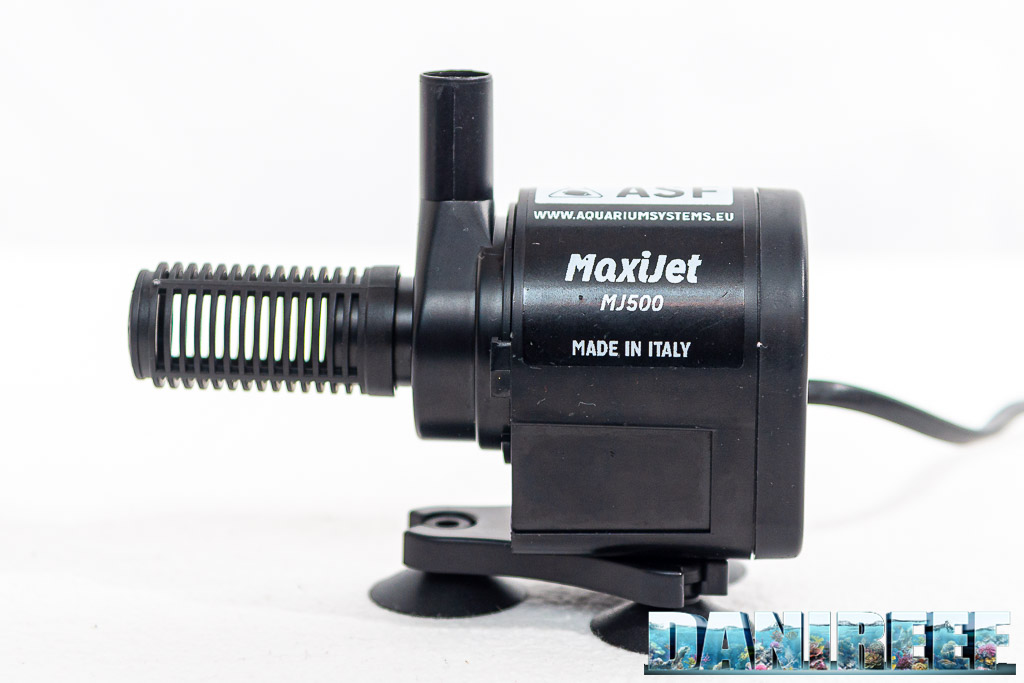
We tried to make the meter fit snugly against the pump outlet.
The measurement is expressed in liters per minute. Then simply multiply the result by 60 to get the liters per hour. Of course we point out that the measurement is valid within the conditions under which we made the measurements. The connecting pipe may have induced leaks in the system.
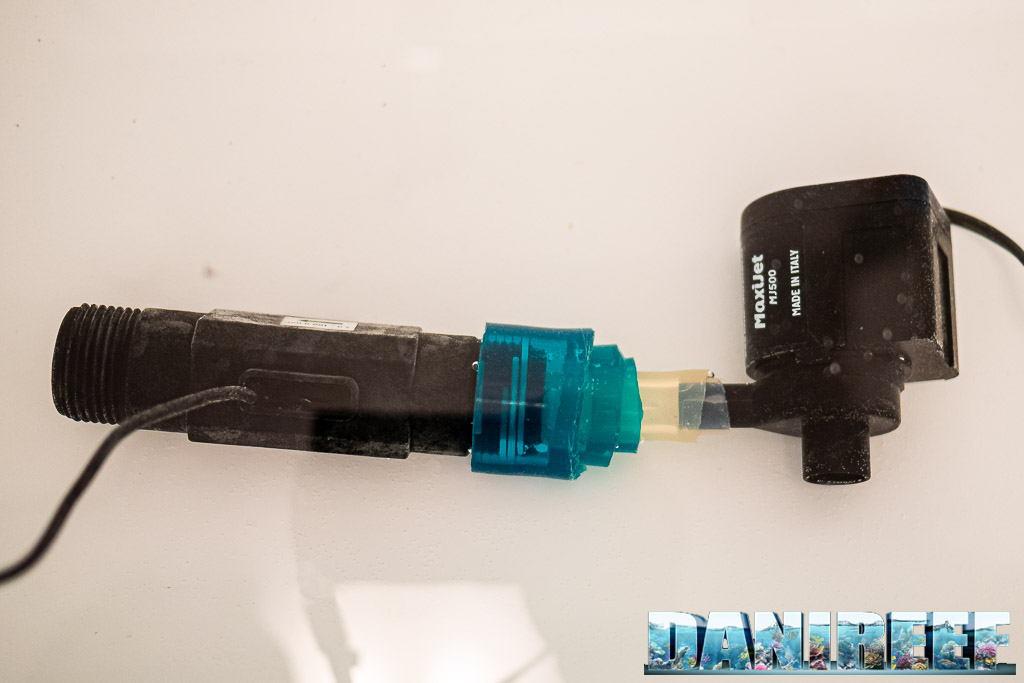
The system thus designed gave us a value of 8.7 liters per minute.
The maximum flow rate was thus 522 l/h (i.e., 8.7 l/m*60), for practical purposes, quite close to the claimed 550 l/h. Something that happens very rarely. The pump achieved 95% of its claimed value under the test conditions. An excellent result when we consider the 66% of the Ecotech Marine Vectra M1 (article), 67% of the Waveline DC6000 (article), 70% of the Hydor Seltz D6000 (article) and 86% of the Rossmont RX 3200 (article), just to name a few of the pumps we tested.
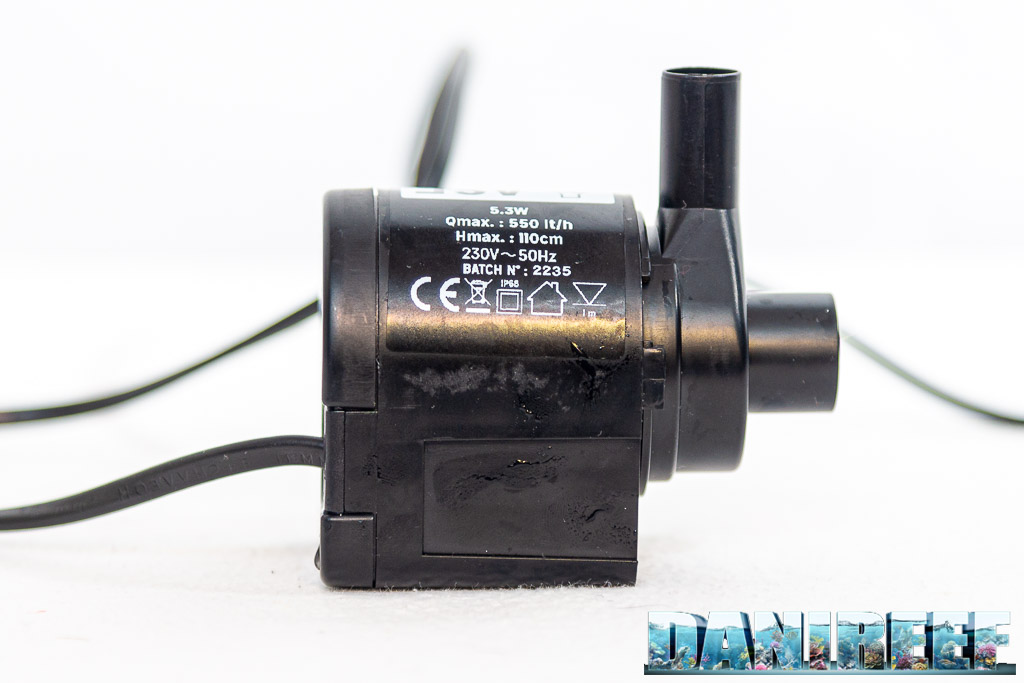
Energy Consumption Test
The measure of instantaneous consumption was made possible through the use of the convenient RCE PM600 instrument, which is also capable of measuring Cos(fi) (or phase shift). The result is given in watts.
The maximum declared consumption of the MaxiJet MJ500 is 5.3 watts; according to our measurements we are at about 5.1 watts, practically 4% less than the declared value, which may also be due to the voltage at that precise moment, which is perhaps a little lower than the stabilized value that companies use when doing their tests.
Considering a consumption of 5.1 watts, and an energy cost of 0.27 euros per kwh, we could use this pump continuously for a whole year with a consumption of about 44.7 kwh, so a cost of 12 euros per year, or 1 euro per month.
The MaxiJet MJ500 is the perfect pump to use in an aquarium. Sufficiently powerful to do just about anything, from managing any kind of filter to using it for many necessary tasks, such as cleaning rocks with a strong but not too powerful flow, moving new water from its vessel to the aquarium, and so much more.
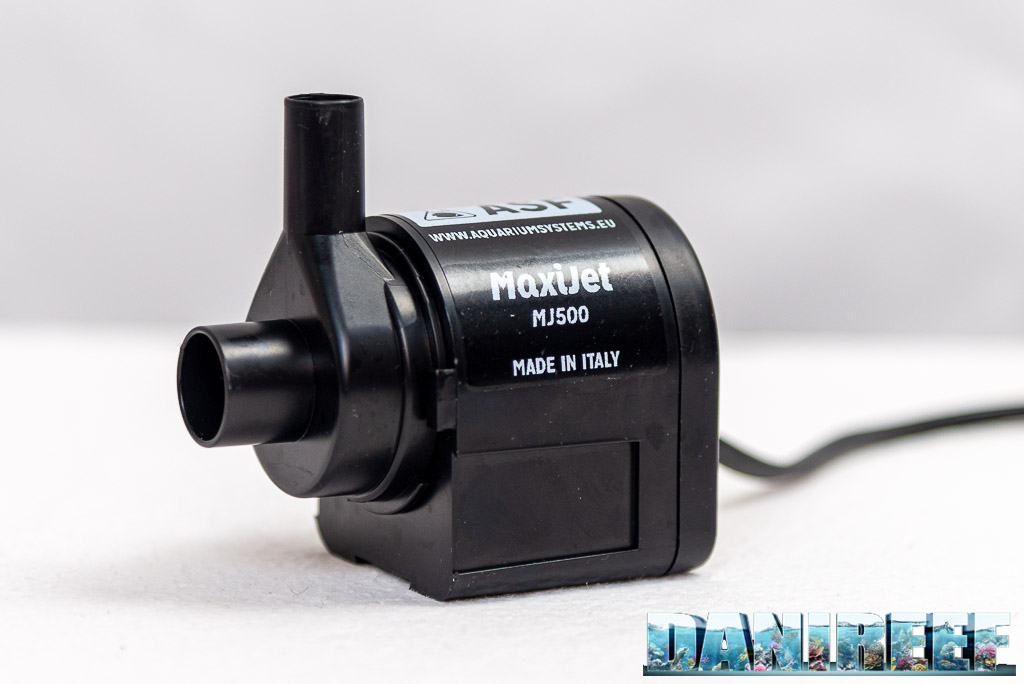
The report with stated data
Let us now look at our measurements compared to data from the manufacturer.
Pump head
| pump | pump head | measurement | deviation |
| MaxiJet MJ500 | 110 cm | 109 cm | – 1 % |
The head measurement has a very small deviation such that it can be considered completely negligible. The MJ500 delivers what it promises.
Flow rate
| pump | flow rate | lab measurement | deviation |
| MaxiJet MJ500 | 550 l/h | 522 l/h | – 5 % |
The deviation between measured and declared flow rate is close to 5%, again a practically perfect value. Differences are often closer to 40%.
Power consumption
| pump | consumption | lab measurement | deviation |
| MaxiJet MJ500 | 5,3 w | 5,1 w | – 3,7 % |
Power consumption is about 4% lower. Again, another value that is absolutely in line with what is claimed, probably due to the grid voltage at that precise time.
Correspondence with respect to declared data
Finally, just as a term of comparison, we can give a value of correspondence with respect to the data declared by the house for flow rate, head, and consumption.
| pump | pump head | flow rate | consumption | Final Value (absolute) |
| MaxiJet MJ500 | 99 % | 95 % | 96 % | 96,7 % |
In conclusion
The reference value of the MaxiJet MJ500 is 284.5 l*m/h, while the stated reference value is 302.5, a loss of about 6%. Note that the reference value is the area subtended by the flow rate and head values. Basically we are going to do the operation of (flow rate x pump head/2).
The 6% difference is an excellent value given that virtually all direct competitors do worse, much worse. Never before have we measured a value so close to the technical data.
In any case for our aquarium use we must always consider what the pump actually expresses, not what it should express according to the stated data. But in this case the two values are virtually identical. An incredible added value when choosing.
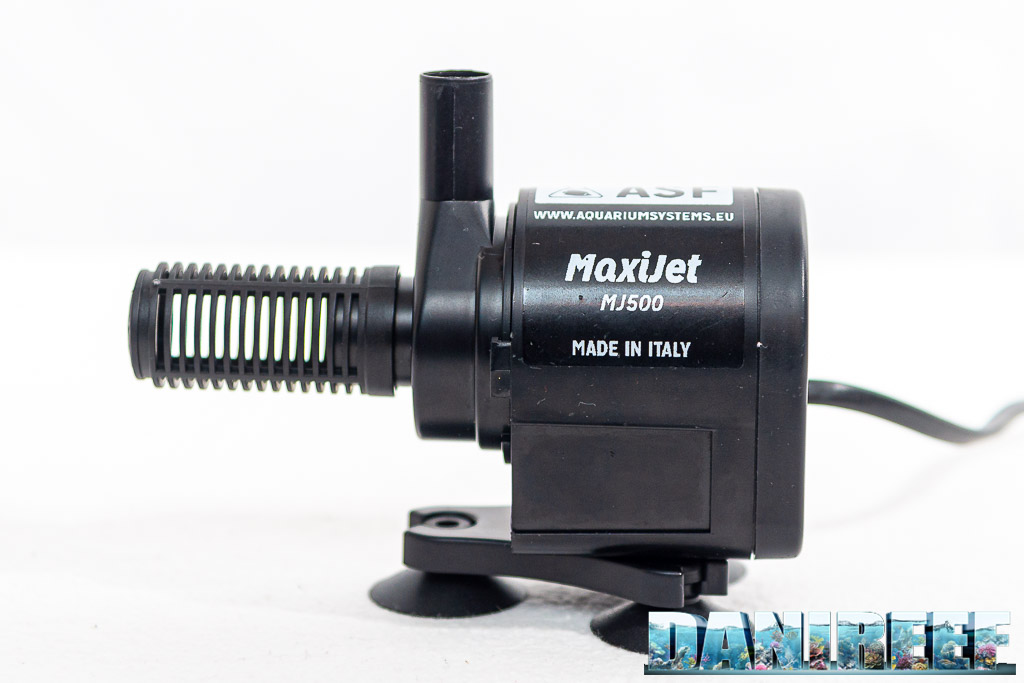
PROS
![]() Excellent performance and coincident with the stated values
Excellent performance and coincident with the stated values![]() Excellent construction
Excellent construction![]() Quiet
Quiet![]() Versatile
Versatile
CONS
![]() Nothing relevant
Nothing relevant

Disclaimer: We thank ASF Aquarium Systems for sending us this MaxiJet MJ500 for the purpose of this review.
[Translated by Aisja Baglioni]
[ad_2]
Source link
